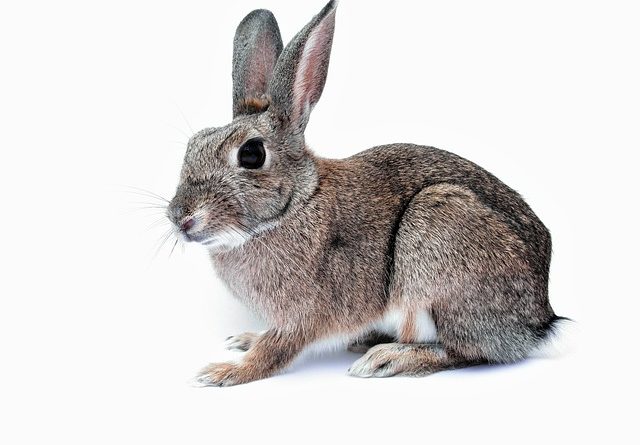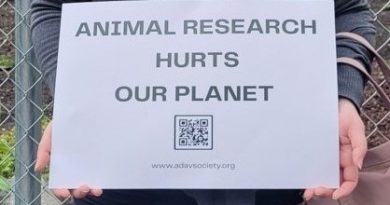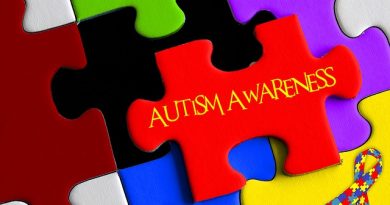A Tug of War Over Animal Testing is Dividing the Scientific Community
Animal-free alternatives to validate drug safety exist, so why are some researchers still hung up on it?
By Roberta Staley, March 12, 2021
Charu Chandrasekera was researching heart failure at an American Midwest university, using mice and rats as her test subjects. Then, a new creature came into her life: Mowgley, a grey tabby cat.
After the adoption, Chandrasekera started seeing Mowgley in the lab animals. They would look at her with the same expressions she saw in her cat, the same “innocence and purity” that captured her heart. She could no longer bring herself to kill the rodents, which share a large part of our DNA and are the animal of choice for biomedical research. Mowgley “taught me all about animal sentience and how animals are so much like us,” she says.
Empathy alone might be enough to stop someone from using animals in their research. For Chandrasekera, who lives in Windsor, Ont., it solidified the hard data she had been noticing. The research she was conducting on heart failure, and later diabetes, didn’t accelerate therapeutic development or actually help people. Animal studies in the rest of the field werenʼt translating well either. “To me, it was no longer justified scientifically or ethically,” she says.
In 2012, after six years of study, Chandrasekera finished her research in the United States and vowed “never to do animal research again.” But then she took her vow further: the very paradigm of biomedical research, she realized, had to change, and so she founded and became executive director of the Canadian Centre for Alternatives to Animal Methods at the University of Windsor. She also created its subsidiary, the Canadian Centre for the Validation of Alternative Methods.
Many people assume drugs that are efficacious in lab animals will be safe for humans. Health Canada even requires new drugs to be tested on animals before they can be tested in people. But at least 90 percent of new drugs that prove to be both safe and effective in animals fail in clinical trials on humans, according to the National Center for Advancing Translational Sciences at the U.S. National Institutes of Health (NIH). In other words, these drugs either don’t work, produce unexpected side effects in humans or even prove lethal. For example, the painkiller Vioxx, which was safe when tested on animals, caused an estimated 140,000 heart attacks and 60,000 deaths in the United States in the early 2000s before its manufacturer voluntarily pulled it from the market.
“Animal modelling,” the term that describes biomedical research about human diseases using creatures like rodents, is also expensive and time consuming. It can take a decade to research and develop a marketable drug, and cost from US$1 billion to US$2.5 billion. One hundred million animals are used in labs around the globe every year. A growing group of scientists says that animal modelling is a waste of research dollars and lives, not only for these creatures but for humans, too. So why does science continue to insist on animal testing as the gold standard for biomedical research?
Humans have looked upon animals as commodities for experimentation since the time of the ancient Greeks. It wasn’t until 1876 that opposition to animal testing mushroomed and Great Britain passed the Cruelty to Animals Act in response to painful procedures being performed on animals without anesthesia or analgesics. Since then, other arguments have sprung forth to oppose animal trials, with some researchers questioning their efficiency and the value of the results they produce.
Last year, for example, COVID-19 became a lightning rod for concerns over the speed and effectiveness of animal modelling. Media coverage heightened awareness that a Noah’s ark of animals — monkeys, ferrets, hamsters, dogs, and genetically altered mice and rats — had been recruited as subjects in the scramble to find vaccines and drugs. With hundreds of millions of people becoming infected by the virus and more than two million dying, the need for fast, effective research that works for humans has never been more clear.
Several new non-animal methodologies have emerged in recent years. One is human organs-on-chips. About the size of a computer memory stick with hollow channels lined with living cells that mimic a human organ, the chips showed early evidence that the drug amodiaquine might inhibit entry of COVID-19 into cells. Developed by the Wyss Institute at Harvard University, the chips replicate the functions of three-dimensional living organs such as human lungs, intestines, kidneys and brains. Mechanical forces mimic the physical microenvironment, such as the breathing motion of lungs. A 2019 study reported that organ-on-chips technologies could save up to 25 percent, or about US$700 million, in total drug development costs.
Another non-animal research method is phage display, which uses bacteriophages (viruses that infect bacteria) to produce antibodies that bind to human-body invaders. Recognized by the 2018 Nobel Prize in Chemistry, the technique could hold great therapeutic potential for COVID-19, and other future infectious diseases, since an indirect cause of mortality from the virus is failure to produce effective antibodies.
Alpesh Patel, science manager with Animal Free Research UK, a founding member of the Alliance for Human Relevant Science, says another alternative to animal modelling (and one that is being used in COVID-19 research) is CRISPR-Cas9, which “enables scientists to modify in the lab human cells outside the body.” The researchers who developed CRISPR-Cas9 were awarded the 2020 Nobel Prize for Chemistry, and the discovery is now being studied as a treatment for such human maladies as sickle cell anemia, replacing defective or mutated genes with a normal copy.
An additional alternative is computer modelling. Last year, the Summit supercomputer at Oak Ridge National Laboratory in Tennessee analyzed 2.5 billion genetic combinations to determine COVID-19 therapeutics. Summit found a pattern of gene activity in the lungs of COVID-19 patients that resembled a pathology for which drugs already exist. Computer modelling could also make toxicity research, such as dropping compounds into rabbits’ eyes, unnecessary.
Thomas Hartung, director of the Center for Alternatives to Animal Testing in Baltimore, has pioneered the use of miniature brains, which are artificially grown tissue cultures called organoids created from human stem cells. Experimenting with thousands of mini-brains the size of a house-fly eye and “identical in composition” to the actual human organ, Hartung and his team at Johns Hopkins University demonstrated that COVID-19 can not only infect human brain cells but damage them. The findings showed “very clearly” that organoids are an effective research tool, Hartung said in an August webinar. “It will be difficult not to use them in a similar, fast way for drug and vaccine development and regulation in the future.”
Charu Chandrasekera’s ongoing diabetes research involves the use of 3D-bioprinted human tissue that is engineered with cells from the heart, liver, gastrointestinal tract, pancreas and skeletal muscle. This methodology — Chandrasekera calls it “diabetes in a dish” — allows scientists to see the effect of the disease on a human system.
As more scientists invest in developing non-animal methodologies, many continue to defend the use of animals in biomedical research. Chris Magee says that the high failure rate cited by the NIH for animal testing is misleading, because it also includes situations like drug trials that have been stopped for commercial reasons. He is head of policy and media at Understanding Animal Research, a British not-for-profit that promotes the understanding of animal modelling in science. Magee also says that animal models are used alongside other technologies, not at the expense of them, so the blame can’t be assigned just to the animal-based work. Failure in drug development is actually the norm, he says, and it’s the result of the inherent difficulties of developing and physically producing safe and effective medicines, even using all available tools.
For Magee, this means that human biology-based methods should be complementary to — not exclusive of — testing on animals. Magee points to the American biotechnology company Moderna, which used messenger RNA to create a COVID-19 vaccine that advanced to human clinical trials within a matter of months and began its rollout to the public at the end of 2020. The vaccine showed early promise in animal models before being tested in people.
The mythology of momentous breakthroughs looms large in the history of animal testing, too. Most famously in Canada, the Nobel Prize-winning discovery of insulin came about thanks to physician Frederick Banting and his assistant, Charles Best — who experimented on dogs. Their work led them to isolate insulin, the life-saving hormone used to treat human diabetes. This year marks the 100th anniversary of that milestone.
Yet breakthroughs like this are rare, says Chandrasekera, and the failures outweigh the successes. A century after Bantingʼs discovery, animal modelling has sparked little progress in the search for a diabetes cure, or even in the treatment of its serious complications like limb nerve damage, which doesnʼt even happen to the animal models with the disease, Chandrasekera says. “After years of animal testing, we still don’t understand the mechanisms of diabetes in humans.”
Nonetheless, animal modelling continues to be considered the gold standard of research. This benchmark is founded on four misguided principles, says Carla Owen, CEO of Animal Free Research UK. The first is moral anthropocentrism, or the concept that “humans are best,” based upon the assumption that human needs, wants and desires hold priority in moral calculations, Owen says. The next principles are instrumentalism, the idea that animals exist to serve our interests, and utilitarianism, the argument that animals can be sacrificed because human interests are more important. The fourth is based upon the long-standing assumption that animals are devoid of reason, rationality, language, minds or souls. This position dates back at least to 17th-century French philosopher René Descartes, who theorized that animals, due to a lack of soul, were automata that could not truly feel pain and thus couldn’t suffer during experimentation. Such concepts became institutionalized, Owen adds. “People have built their research careers on the backs of animal experiments.”
Moreover, animals can’t protest their treatment; they are incapable of giving or withholding consent, representing theirown interests, and understanding or rationalizing their suffering. “We’ve normalized the unthinkable,” says Owen. “We should recognize our dominance, meaning that animals should be afforded stronger — not weaker — protection, much as we give children.”
Sixty years ago, standards were established to try to ensure that animals receive better treatment in lab settings. Called the 3Rs, this model asks researchers to replace animals when possible, such as by shifting to more in vitro (test tube or petri dish) experimentation or by using tissue samples rather than live animals; to reduce the number of animals used; and to refine experimentation by, for example, using smaller injection needles. The 3Rs continue to inform modern animal research today, says Jason Allen, president of the Canadian Association for Laboratory Animal Science.
But animal testing is rife with failure due, in part, to the lab environment, according to a 2015 analysis of animal testing published in the Cambridge Quarterly of Healthcare Ethics. Filled with human noises, artificial lighting and cages that don’t allow natural behaviours, labs induce additional stress when animals watch their buddies being handled or euthanized, the study found. Chandrasekera says that lab rodents’ forced inactivity also makes them metabolically morbid — on a trajectory to premature death. “It confounds data interpretation and experimental outcome.”
“After years of animal testing, we still don’t understand the mechanisms of diabetes in humans.”
Charu Chandrasekera
Dan Weary, a professor in the Animal Welfare Program at the University of British Columbia, believes lab animals’ environments can be dramatically improved. Weary’s team has experimented with creating complex cages for lab rats and mice that stimulate them physically and mentally. Large cages with multiple interconnected levels as well as a soil substrate allow rodents to engage in natural behaviours like stretching, hiding, scampering and digging. Additional stimulation can be achieved by such things as giving rodents treats hidden in containers that require creativity to open, Weary says.
Improvements to the shoebox-like caging standard, however, are impeded by the notion that scientists can only replicate studies from any place in the world if cages are similar. This concept is “so institutionalized and ritualized that it’s very hard to change,” says Weary.
Chandrasekera says that institutional change will require incentives, like providing researchers with dedicated funding, access to human tissues and other biomaterials, and strict guidelines and policies that prioritize the use of “human-based integrative models.” Currently, researchers who want to use non-animal methods to study human health face systemic roadblocks. “It’s often difficult to get grants or publish papers based purely upon data” gleaned from studies using human-based methods, says Chandrasekera, describing it as “a common problem experienced by far too many researchers in my field.”
Last year, she applied for a health research grant to create a novel human lung tissue model, and while some reviewers applauded it as impressive and innovative, another stated that she should plan an animal study to validate it. She says human data tends to be treated as anecdotal and is often dismissed when it disagrees with the animal data. “This is the kind of mentality that we need to change,” Chandrasekera says. “Animal models must be the last resort, not the first option.”
Change in research labs is more likely to occur if taxpayers, who fund public research, demand that companies and universities accelerate human biology-based testing. Owen points to the effectiveness of public lobbying against animal testing in the cosmetics industry, which was key to a United Kingdom ban in 1998, followed by a European Union ban in 2013. China also announced that, as of this year, imported cosmetics like blush, shampoo and perfume will no longer face mandatory pre-market animal testing to assess eye and skin irritation. (Canada and the United States still allow cosmetic testing on animals.)
The bans in Britain and the EU forced cosmetic companies to search out alternatives to animal testing. One lab, XCellR8 in Cheshire, U.K., stepped in to fill that gap. Its entire testing regimen is animal-free and boasts numerous multinational clients, such as the Body Shop.
Canada lags behind other countries despite public distaste: a 2019 Cruelty Free International poll showed 88 percent of Canadians are opposed to animal testing in the cosmetics industry. But a ban on cosmetics testing would be just the tip of the iceberg, and some Canadian scientists, along with animal-welfare advocates and animal-rights lawyers, are reimagining a new future for those creatures fated to live their lives in laboratory cages.
Leading this informal working group is Elisabeth Ormandy, who is also executive director of the Canadian Society for Humane Science. Ormandy says animals should no longer be considered commodities “to be harmed, killed and taken apart in the name of science,” but adds that real change will only occur if the “deeply embedded culture” of lab animal use shifts within governments and institutions. Health Canada, for example, upholds animal testing as the means to ensure the safety of food, household cleaners, pharmaceuticals and medical equipment prior to human clinical trials.
Ormandy is critical of the limited reach of the Canadian Council on Animal Care (CCAC), which is tasked with the oversight of animal-based research in Canada. The organization assesses and verifies institutional animal ethics and care programs under its Good Animal Practice certification program. CCAC certification is required for publicly funded labs undertaking animal-based projects. According to the CCAC, its certified labs used 4.5 million research animals in 2019, 30 percent of them mice. Private labs, however, do not have to opt in to CCAC’s certification system, allowing them to operate unchecked and with no tally of the number of animals used, says Ormandy.
Ormandy’s group is still working out its strategies but would like to push toward replacing lab animals altogether. That, Ormandy admits, is a long way off. “We’d need a really big injection of funding to develop and validate non-animal methods, which are held to a much higher standard than animal methods.” Hartung’s mini-brain organoids, for example, are considered boutique and unlikely to be part of the average laboratory’s toolkit any time soon. Yet, if scaled up, such advances hold enormous potential.
Paradigm shifts almost always start with the passions of young people, and Ormandy is helping to nurture young minds through the UBC course she teaches about human biology-based techniques. Progress is quick in some areas, and painfully slow in others. But Ormandy and her colleagues continue to hope for the complete elimination of animal testing, sparing millions of creatures unnecessary suffering and death in the name of science.
Roberta Staley is a Vancouver-based author, magazine editor and documentary filmmaker.
This story first appeared in Broadview’s April/May 2021 issue with the title “Lab Rats.”




